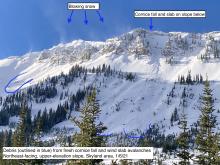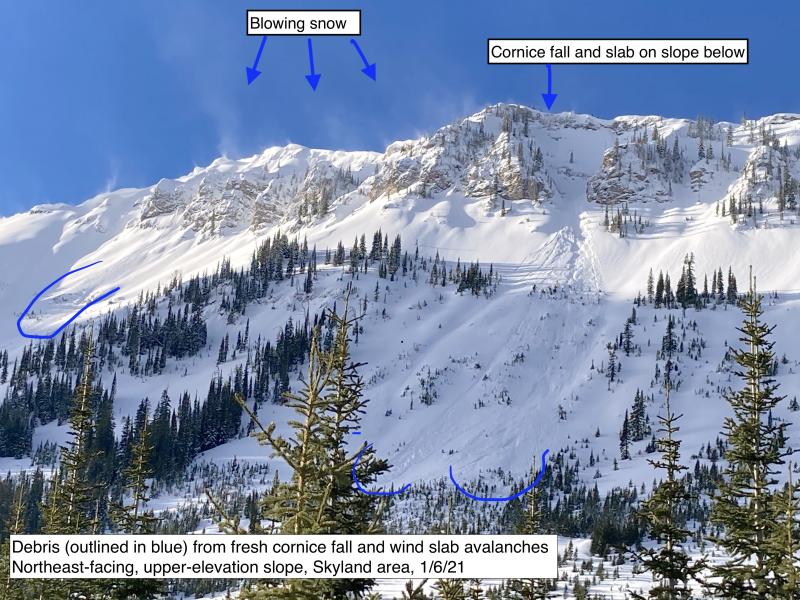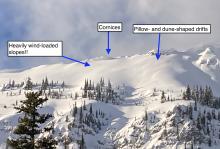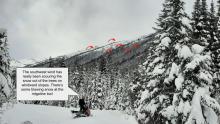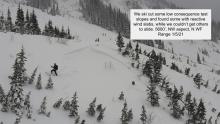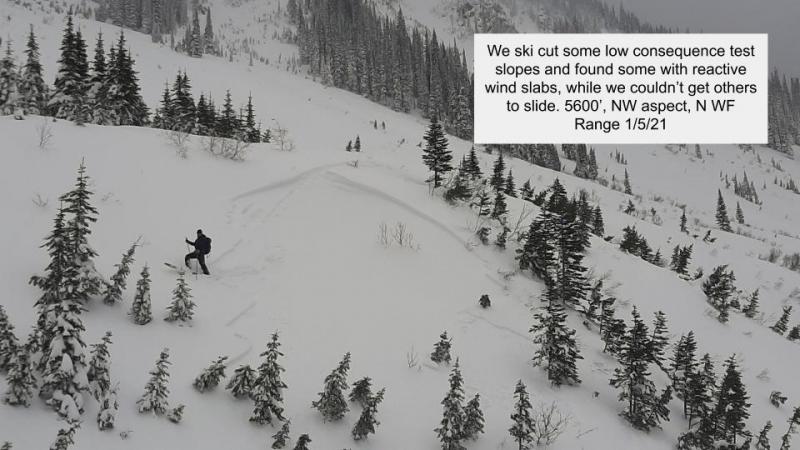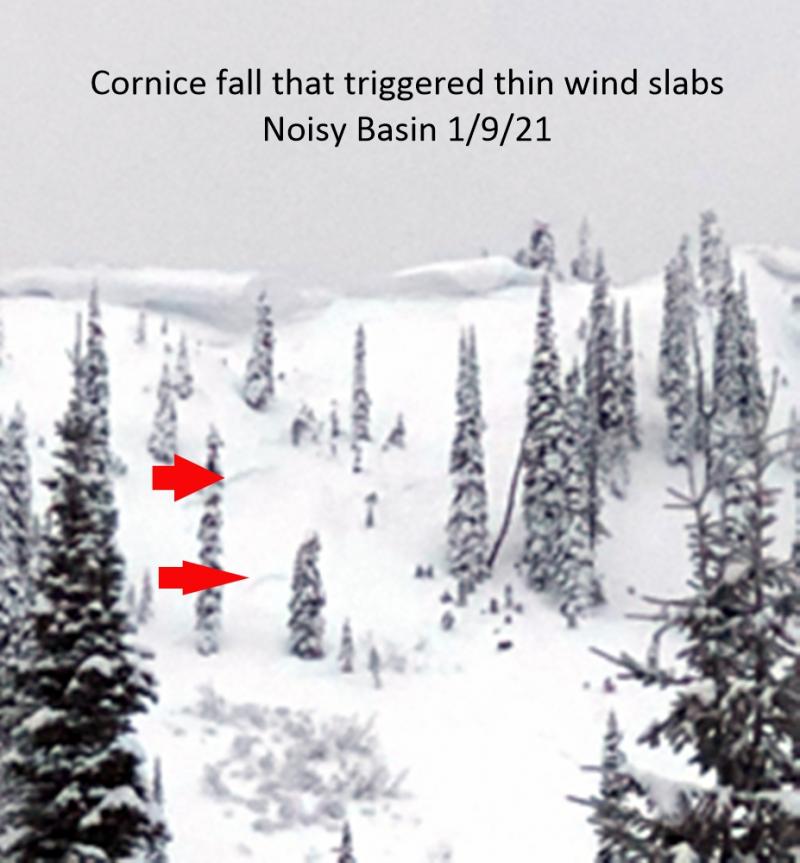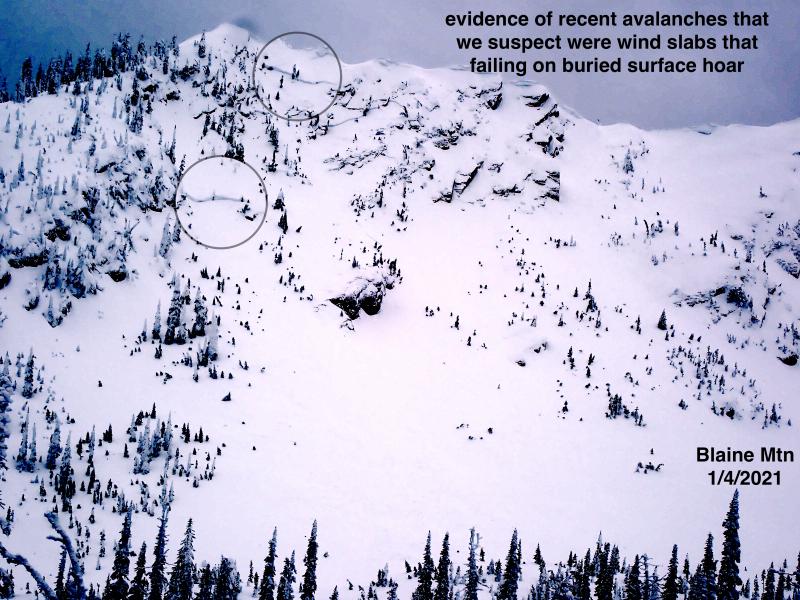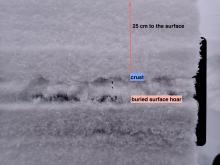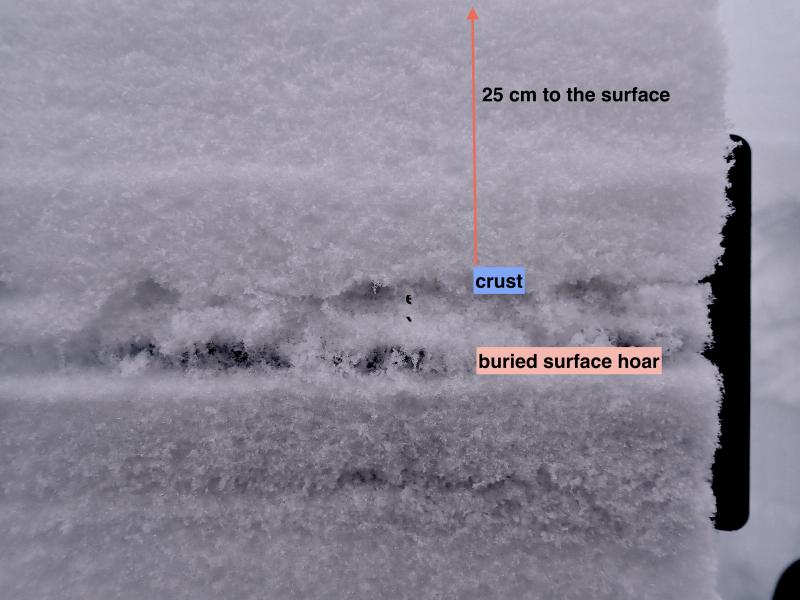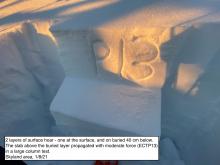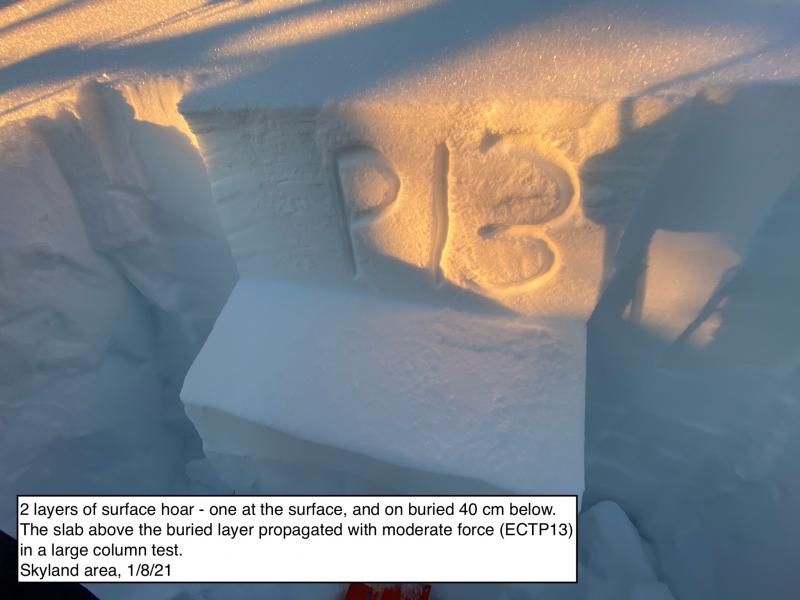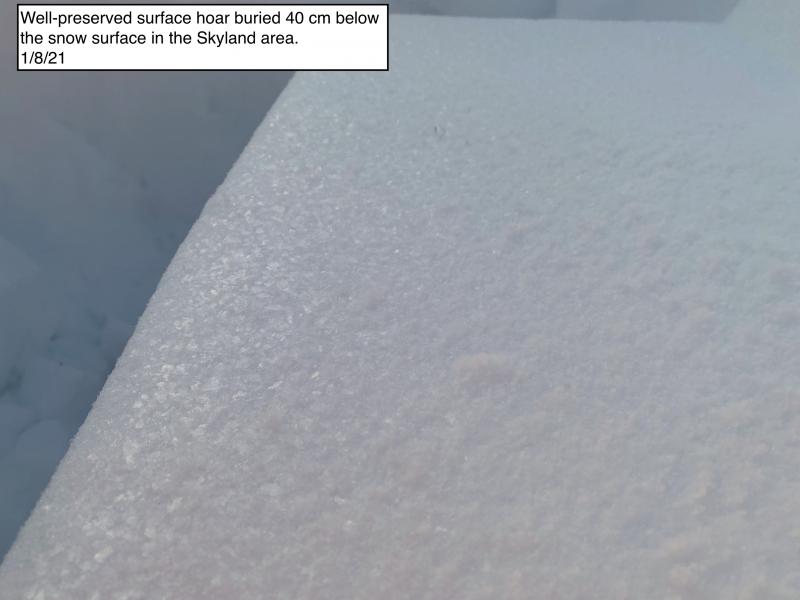| Monday | Monday Night | Tuesday | |
|---|---|---|---|
| Cloud Cover: | Mostly Cloudy | Mostly Cloudy | Mostly Cloudy |
| Temperatures: | 26 to 33 deg. F. | 18 to 22 deg. F. | 22 to 29 deg. F. |
| Wind Direction: | South | Southwest | Southwest |
| Wind Speed: | 14G25 | 18G30 | 17 |
| Snowfall: | 1" to 2" in. | 3" to 5" in. | 0" in. |
| Snow Line: | 4000' | 4000' | 2000' |
Whitefish Range
Swan Range
Flathead Range and Glacier National Park
How to read the forecast
Winds continue to drift snow into firm slabs that can be large enough to bury and injure you. Seek out safer and better riding conditions in sheltered terrain. Bear in mind that weak layers buried 1 to 4 feet deep in the snowpack remain a concern. Hedge your bets by selecting terrain that is planar or concave, and is free of terrain traps.

2. Moderate
?
Above 6500 ft.
2. Moderate
?
5000-6500 ft.
1. Low
?
3500-5000 ft.
- 1. Low
- 2. Moderate
- 3. Considerable
- 4. High
- 5. Extreme
-
Type ?
-
Aspect/Elevation ?

-
Likelihood ?CertainVery LikelyLikelyPossible
 Unlikely
Unlikely -
Size ?HistoricVery LargeLargeSmall

Expect winds to continue to build firm slabs that could range from 1 to 3 feet thick on leeward aspects. Consistent, moderate wind speeds, and gusts up to 60 mph, have formed slabs near ridgelines, as well as cross-loaded terrain features further downslope. Signs of drifting snow and pillowy surfaces are your cues to seek wind-sheltered terrain. Though fresh wind slabs may feel manageable, they may be covering harder, more dangerous slabs below.
-
Type ?
-
Aspect/Elevation ?

-
Likelihood ?CertainVery LikelyLikelyPossible
 Unlikely
Unlikely -
Size ?HistoricVery LargeLargeSmall

Weak layers buried deep in the snowpack lurk on all aspects at middle and upper elevations. Despite the lack of activity in recent days, consistent loading and the destructive potential of a large slab avalanche should be enough to make you second guess your terrain choice. If you do decide to push into steeper terrain, ask yourself, what is an avalanche on this slope going to drag me in to? If the answer is a large stand of timber, a creek bed, or over a cliff band, I’d strongly recommend choosing terrain that has clean, fanned runouts which will be less consequential if caught.
Yesterday we received observations from three zones; the southern end of Glacier National Park, the Flathead Range, and the southern Whitefish Range. All three parties reported periods of heavy wind transport and wind slab development. Another consistency amongst the parties was that although there was a slab present, it was stubborn or unreactive with ski cuts or stomping. I backed off of a slope yesterday after finding a hard wind slab sitting on top of a layer of less dense snow. Despite the lack of activity found in my travels yesterday, the structure of recently formed wind slabs made my decision easy. I sought out terrain that was sheltered from the wind. An unintentionally triggered avalanche from News Years Eve, which occurred further downslope than expected, reminded me to maintain safe travel protocols throughout the descent.
Impressively strong winds continue to build slabs on leeward facing slopes. Wind speeds at Aeneas (Swan Range), Snowslip (Glacier National Park), and Hornet (Whitefish Range) all remained at optimal transport speeds overnight. I’d suspect whatever snow that is left to transport, will continue to get blown into dense, thick slabs today. In these heavily wind loaded areas, there is more of a concern for triggering a larger, persistent slab avalanche. The additional weight will stress faceted crusts buried deep in the snowpack. Forecasting persistent slab avalanches during times of consistent loading is challenging. Weak layers may remain unreactive, or they may be near their tipping point and primed for human triggering. If you feel uneasy about the slope you are planning to ride, the safe bet is to dial back your choices and stick to terrain with lower slope angels.
Temperatures appear to rise to above freezing at roughly 5500 feet today as another band of moisture enters the area. This has the chance to bring rain into the middle elevation band. If you begin to see water droplets bead up on your jacket, watch for rollerballs and potentially small point releases that could be an issue if they push you into a terrain trap.
Warming temperatures will drive incoming snow levels up to around 4500 feet this afternoon. Expect a trace to 2 inches of snow throughout the day. Temperatures will hover around freezing at 5500 feet. Winds will blow steady at 10 to 15 mph with gusts up to 25 mph at the highest ridgelines.
This forecast applies only to backcountry areas outside established ski area boundaries. The forecast describes general avalanche conditions and local variations always occur. This forecast expires at midnight on the posted day unless otherwise noted. The information in this forecast is provided by the USDA Forest Service who is solely responsible for its content.



